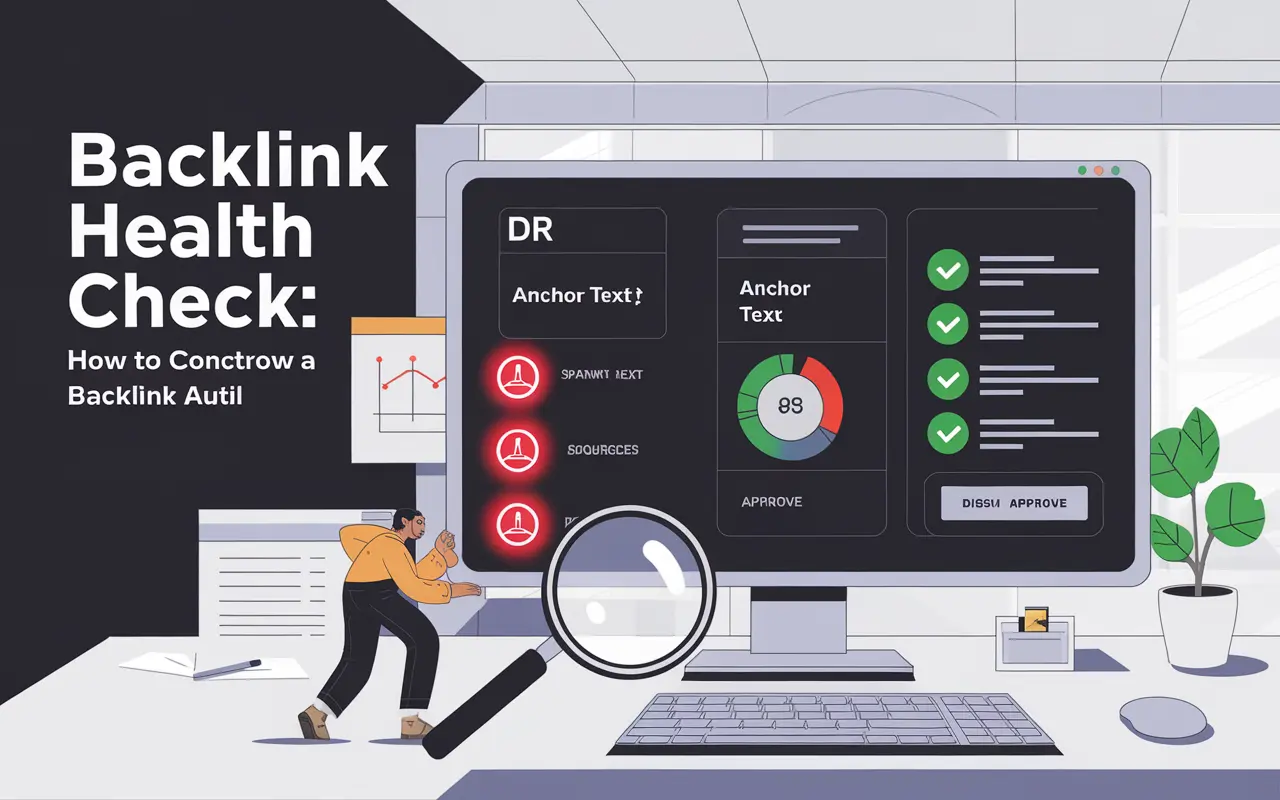Understanding Backlink Audits: What They Are and Why They Matter
Conducting a backlink audit involves analyzing all the inbound links (backlinks) pointing to your website to assess their quality and impact on your search engine rankings. It’s a critical step in any SEO strategy, helping you identify toxic or spammy links that could hurt your rankings and uncover opportunities to strengthen your link profile. A well-executed backlink audit prevents Google penalties, supports higher organic rankings, and informs better link-building decisions.
Backlink auditing bridges the gap between technical SEO and link-building by ensuring that your site’s link profile aligns with Google’s Webmaster Guidelines. Without this regular cleanup and monitoring process, a site may unknowingly suffer from algorithmic penalties or drops in rankings.
Key Takeaway
Conducting a backlink audit is essential to identify harmful backlinks, improve domain authority, and maintain a healthy website reputation with search engines.
Why Backlink Audits Are Critical for Long-Term SEO Success
Backlink quality is still one of the top-ranking factors in Google’s algorithm. A few highly authoritative backlinks can significantly boost your domain authority, while a handful of toxic links can trigger search penalties.
Backlink Audits Support Organic Growth
Backlink audits help businesses:
- Eliminate low-quality or spammy links that could damage SEO
- Prioritize high-authority linking domains
- Analyze link diversity and anchor text variation
- Guide future link-building efforts to increase trustworthiness
Regular audits also protect your investment in content and SEO by ensuring that off-site SEO assets aren’t undermining success.
Best Practices for Conducting a Backlink Audit
Follow these proven best practices to ensure a successful backlink audit:
- Use Multiple Tools for Accuracy: Leverage backlink tools like Ahrefs, SEMrush, Moz, and Google Search Console to get a complete link profile.
- Identify and Tag Toxic Links: Look for links from irrelevant, low-quality, or spam sites. Metrics like Domain Rating (DR), anchor text, and link origin tell the full story.
- Audit Anchor Text: Ensure a healthy mix of branded, exact-match, and generic anchor texts. Too many exact-match anchors can trigger over-optimization penalties.
- Review Link Relevance: Links from non-relevant niches or languages indicate unnatural linking practices.
- Request or Disavow Toxic Backlinks: Reach out to webmasters to remove harmful links. When unresponsive, use Google’s Disavow Tool to signal Google to ignore them.
- Benchmark Against Competitors: Study competitors’ backlink profiles to find link gap opportunities or shared toxic links.
- Document Your Findings: Maintain an audit spreadsheet with link source, DR score, anchor type, status, and action taken.
Process: How to Conduct a Backlink Audit Step-by-Step
1. Gather All Backlink Data
Use tools like Ahrefs, SEMrush, or Google Search Console to download your entire backlink profile. Export data such as referring domains, link paths, anchor text, and authority scores.
2. Analyze Link Quality
Assess metrics such as Domain Rating (DR), Trust Flow (TF), and Citation Flow (CF) to score each backlink. Flag links from shady sources, irrelevant domains, or link directories.
3. Spot Patterns and Toxic Behavior
- Excessive use of exact-match keywords in anchor texts
- Backlinks from penalized or non-indexed websites
- Links from Private Blog Networks (PBNs)
4. Take Corrective Action
Notify offending site administrators to take down suspicious links. If they don’t respond, submit a disavow file through Google Search Console.
| Backlink Element | Good Practice | Red Flag |
|---|---|---|
| Domain Authority | Above 40 | Below 20 |
| Anchor Text | Branded/Generic | Over-optimized/Exact-match |
| Source Relevance | Related Niche | Irrelevant Industry |
| Index Status | Indexed in Google | Not Indexed |
Case Study: How a Backlink Audit Revived an Underperforming Blog
Problem: 40% Drop in Organic Traffic in 3 Months
A lifestyle blog experienced a significant 40% drop in traffic. Internal SEO was sound. The team suspected off-page issues, particularly with backlinks.
Solution: Conducted a Deep Backlink Audit
Using Ahrefs and SEMrush, the audit revealed over 120 toxic backlinks from blog comment spam, non-indexed directories, and PBNs. They disavowed these links through Google.
Results: Recovered in 6 Weeks With 65% Increased Organic Traffic
Within weeks, rankings began to recover. Organic traffic surged by 65%, and 15 primary keywords re-entered the top 10. Domain Authority improved by 8 points.
Common Mistakes to Avoid During a Backlink Audit
- Only Using One Tool: Relying on a single platform leads to incomplete backlink data.
- Disavowing Without Cause: Removing valuable links due to poor research can harm your authority.
- Ignoring Anchor Text Analysis: You miss patterns of over-optimization without anchor distribution review.
- Skipping Regular Audits: Conduct audits every 3–6 months. Waiting too long allows link rot or spam to build up.
Related Terms
- Off-Page SEO: Tactics performed outside the website to enhance rankings, such as backlinks and social signals.
- SEO Audit: A full review of both on-page and off-page elements affecting search rankings.
- Domain Authority: A predictive score representing a site’s ability to rank in Google, heavily influenced by link quality.
FAQs About How to Conduct a Backlink Audit
Backlink audits should be conducted every 3 to 6 months, or immediately after a noticeable drop in search rankings or traffic.
Use tools like Ahrefs, SEMrush, Moz, Majestic, and Google Search Console for the most comprehensive backlink insights.
Yes, identifying and removing toxic backlinks through a backlink audit is a key step in recovering from manual or algorithmic penalties.
No, not all low-authority links are harmful. Only disavow links that come from irrelevant, spammy, or suspicious sources.
Conclusion: Incorporate Backlink Audits Into Your Ongoing SEO Strategy
Regular backlink audits are a foundational part of maintaining a strong SEO presence. They help clean up poor-quality links, protect your domain from penalties, and guide powerful link-building strategies. Whether you’re recovering from lost traffic or strengthening your domain authority, conducting a backlink audit isn’t a one-time task—it’s an ongoing commitment to search engine visibility and performance.
To dive deeper into effective strategies, visit our SEO services page and explore more expert SEO insights.






